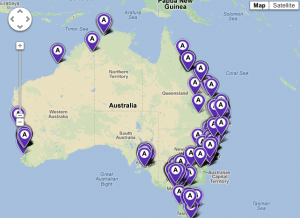
As part of our MYOB Training Course, we’re constantly adding new content and helping our students win work and improve their employability. That’s why we always emphasise the importance of continuing to educate yourself — for the obvious skills advantages you bring to any company, but also for your own confidence.
For many people, it can be a little nerve racking when new blood enters the workplace and in today’s job market, it’s not at all uncommon to see a new face appear. Sometimes it’s in the form of a new employee there to share your workload and other times it’s because your organisation has employed someone to help restructure the business so they operate more efficiently.
The Many and Varied Threat
For many employees, this new face around the office can make them feel threatened — threatened about the future of their jobs and threatened by the prospect of the office dynamic changing. Fortunately, however, there’s an antidote for this rather common reaction to change: taking a course or continuing professional development.
The thing about feeling threatened is that it’s entirely to do with your confidence. You may feel like you’re not quite as educated or as skilled as this other person and as a result, you think your employer won’t need you any more. The truth is, your employer probably has no intention of letting you go, but nevertheless, the job market is changing and up-skilling to increase your knowledge base is invaluable — to you and your employer.
Confidence in Upskilling and Continuing Professional Development
Aside from the tangible knowledge and experience a highly-skilled employee brings to an organisation, they also bring with them confidence. The more secure you feel with your ability to do your job and do it well, the more confident you’ll feel as a result. For this reason, EzyLearn is a big believer in continuing professional development.
Our MYOB, and Microsoft Word and Excel training courses each come with lifetime access to the course content, so that you can review the course material and even access updated content, whenever you need it.
***
A truly confident person would embrace the idea of working with someone new and potentially learning and sharing knowledge, rather than feeling threatened by them. But the key to achieving this confidence is being able to feel secure in your own knowledge base and that’s what EzyLearn’s Continuing Professional Development Program aims to provide bookkeepers with: knowledge.
So stop worrying, stop feeling threatened, and feel more confident in your skills and knowledge by taking one of our online courses today!



























